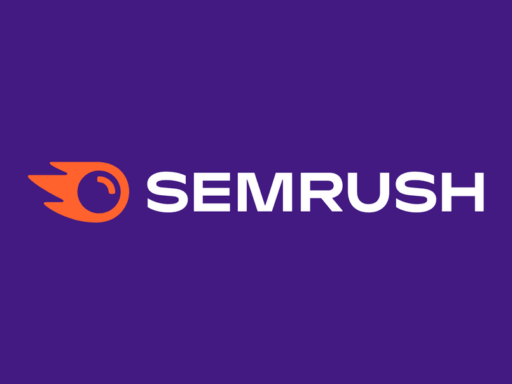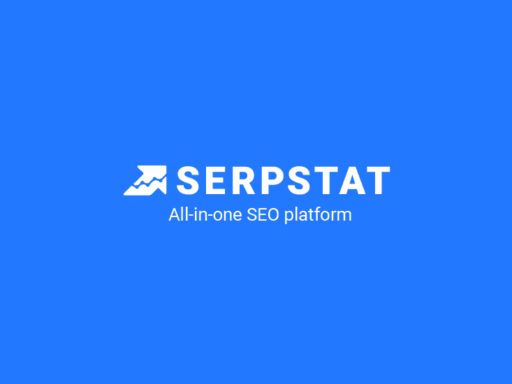Are you looking to create high-converting landing pages that captivate your audience and drive results? Look no further than Landingi, the ultimate platform for landing page creation. With Landingi, you can effortlessly design professional and visually stunning landing pages that leave a lasting impression on your visitors.
Whether you’re a seasoned marketer or just starting out, Landingi provides all the tools and features you need to create impactful landing pages. Best of all, you can achieve all this without spending a dime. That’s right, Landingi offers a free plan that allows you to create stunning landing pages without any financial commitment.
In this article, we’ll guide you through the process of creating high-converting landing pages using Landingi. We’ll break it down into six easy steps, providing tips and insights along the way. By the end, you’ll be equipped with the knowledge and skills to create landing pages that not only look great but also deliver exceptional results for your marketing campaigns.
Key Takeaways:
- Create professional and attractive landing pages with Landingi
- Landingi offers a free plan for easy and cost-effective landing page creation
- Follow six key steps – goal definition, selecting a builder and templates, customization, integration, optimization, and publishing
- Customize the design to align with your brand and captivate your audience
- Integrate your landing page with marketing tools for streamlined lead generation and management
What Are 6 Key Steps While Creating a Landing Page?
When it comes to creating a landing page, there are six key steps that you need to follow. These steps will help you create a landing page that not only captures the attention of your target audience but also drives conversions for your marketing campaigns. Let’s dive into each step and explore how they contribute to the success of your landing page.
Step 1: Define Your Goal
The first step in creating a landing page is to define your goal. Determine what you want to achieve with your landing page, whether it’s promoting a new product, capturing leads, or generating sales. Having a clear goal in mind will guide your design and messaging decisions throughout the process.
Step 2: Select a Landing Page Builder and Templates
Next, choose a landing page builder and templates that align with your goal and vision. Look for a landing page builder that offers a user-friendly interface, customization options, and integration with marketing tools. Select templates that resonate with your brand and cater to your target audience’s preferences.
Step 3: Customize the Design
Once you have selected a landing page builder and templates, it’s time to customize the design. Pay attention to the layout, colors, fonts, and images. Create a visually appealing and cohesive design that matches your brand identity and enhances user experience.
Step 4: Integrate with Marketing Tools
To maximize the effectiveness of your landing page, integrate it with marketing tools such as email marketing services, analytics platforms, and CRM systems. This integration will streamline lead generation, management, and tracking, allowing you to make data-driven decisions to optimize your campaigns.
Step 5: Optimize for Conversions
Optimizing your landing page is crucial for driving conversions. Focus on creating compelling copy, clear calls-to-action, and mobile responsiveness. Pay attention to the placement and design of your call-to-action buttons, use persuasive language, and ensure your landing page is easily accessible on mobile devices.
Step 6: Publish Your Masterpiece
Once you have completed all the previous steps, it’s time to publish your landing page. Before going live, double-check that all elements are working properly and conduct thorough testing. Monitor the performance of your landing page, track conversions, and make necessary adjustments to improve its effectiveness.
| Key Steps | Description |
|---|---|
| Step 1: Define Your Goal | Determine the objective of your landing page |
| Step 2: Select a Landing Page Builder and Templates | Choose a builder and templates that align with your goal |
| Step 3: Customize the Design | Personalize the appearance of your landing page |
| Step 4: Integrate with Marketing Tools | Connect your landing page with marketing tools for seamless lead management |
| Step 5: Optimize for Conversions | Implement strategies to maximize conversion rates |
| Step 6: Publish Your Masterpiece | Make your landing page live and monitor its performance |
Step 1: Defining your goal
In order to create an effective landing page, the first step is to define a clear and specific goal. This goal will serve as the foundation for your entire landing page design, messaging, and metrics. When defining your goal, consider what action you want your visitors to take when they land on your page.
For example, if your goal is to promote a new product or service, your landing page should be focused on highlighting the benefits and features of the offering. If your goal is to register participants for a webinar or event, your landing page should provide clear instructions and a registration form.
By having a clear goal in mind, you can tailor your messaging and design to align with this objective. This will streamline the design process, ensuring that your landing page is optimized to convert visitors into leads or customers.
When defining your goal, it’s also important to consider the relevant metrics that you will use to track the success of your landing page. This could include conversion rates, click-through rates, bounce rates, and more. These metrics will provide valuable insights into the performance of your landing page and help you make data-driven decisions to improve its effectiveness.
Step 2: Selecting a Landing Page Builder and Templates
Once you’ve defined your goal, it’s time to choose a reliable landing page builder and templates that align with your needs. There are several popular options in the market, including Landingi, Moosend, Unbounce, ConvertKit, and WordPress.
When selecting a landing page builder, consider the customization options, integration with marketing tools, and ease of use. Look for a builder that offers a user-friendly interface and allows you to customize your landing page design without any coding knowledge. This way, you can create a unique and compelling landing page that reflects your brand’s identity.
Next, pay attention to the available templates. A diverse range of templates can make your job easier, providing ready-made designs that are easy to modify. Choose a template that aligns with your marketing objectives and caters to the preferences of your target audience. A well-designed template should have a professional look, be visually appealing, and guide visitors towards your call to action.
While reviewing different landing page builders, consider the availability of free plans or trials. These options allow you to test the builder’s templates, features, and customization options before making a financial commitment. Take advantage of these offerings to find the perfect fit for your landing page needs.
Step 3: Customizing the design
Once you have defined your goal and selected a landing page builder, it’s time to customize the design. This step is crucial in creating a visually appealing and user-friendly landing page that captivates your audience and drives conversions.
Layout
When customizing the design, pay attention to the layout of your landing page. A well-structured layout ensures that your content is organized and easy to navigate. Consider using a grid-based layout that allows for clear sections and a logical flow of information.
Colors
Choose colors that not only align with your brand’s visual identity but also create a pleasing and harmonious experience for your visitors. Use color psychology to evoke the desired emotions and associations. For example, blue can convey trust and professionalism, while red can create a sense of urgency or excitement.
Fonts
Font selection plays a crucial role in the readability and overall aesthetic of your landing page. Opt for clear and legible fonts that reflect your brand’s personality. Consider using a combination of fonts to create visual interest and hierarchy.
Images
Include visually appealing and relevant images on your landing page. High-quality images can grab attention, evoke emotions, and communicate the value of your product or service. Make sure the images you choose are in line with your brand and enhance the overall message of your landing page.
Visually appealing and user-friendly experience
A successful landing page should provide a visually appealing and user-friendly experience. Create a seamless and intuitive navigation structure, ensuring that visitors can easily find the information they need. Use whitespace strategically to make your content more digestible and visually appealing.
Furthermore, consider the overall user experience. Ensure that the call-to-action is clearly visible and stands out from the rest of the content. Use persuasive and concise copy that compels visitors to take action.
| Aspect | Tips |
|---|---|
| Layout | – Use a grid-based layout for a well-structured design – Organize content into clear sections |
| Colors | – Choose colors that align with your brand – Consider color psychology to evoke desired emotions |
| Fonts | – Select clear and legible fonts – Use a combination of fonts for visual interest and hierarchy |
| Images | – Include visually appealing and relevant images – Ensure images align with your brand and enhance your message |
| Visually appealing and user-friendly experience | – Create a seamless and intuitive navigation structure – Use whitespace strategically – Make the call-to-action clearly visible and persuasive |
Step 4: Integrating with Marketing Tools
After customizing the design of your landing page, it is crucial to integrate it with your marketing tools to streamline lead generation and management. By integrating your landing page with marketing tools such as email marketing services, analytics tools, and CRM systems, you can effectively manage leads generated through your landing page and drive conversions.
Email Marketing Services
Integrating your landing page with email marketing services allows you to capture leads and nurture them through targeted email campaigns. With seamless integration, you can automatically add leads to your mailing list, send personalized follow-up emails, and track the success of your email marketing efforts.
Analytics Tools
Integrating your landing page with analytics tools provides valuable insights into the performance of your landing page. By tracking metrics such as page views, bounce rates, and conversion rates, you can gauge the effectiveness of your marketing campaigns and make data-driven decisions to optimize your landing page for better results.
CRM Systems
Integrating your landing page with CRM systems allows you to effectively manage and track leads generated through your landing page. By automatically syncing lead data with your CRM, you can streamline lead management, assign leads to sales representatives, and track the progress of leads through the sales funnel.
| Marketing Tool | Benefits |
|---|---|
| Email Marketing Services | Capture leads and nurture them through targeted email campaignsAutomatically add leads to your mailing listSend personalized follow-up emailsTrack the success of your email marketing efforts |
| Analytics Tools | Track metrics such as page views, bounce rates, and conversion ratesGauge the effectiveness of your marketing campaignsMake data-driven decisions to optimize your landing page |
| CRM Systems | Effectively manage and track leads generated through your landing pageAutomatically sync lead data with your CRMStreamline lead management and assignmentTrack the progress of leads through the sales funnel |
Step 5: Optimizing for Conversions
Once you have designed your landing page, it’s time to optimize it for conversions. By implementing best practices in landing page optimization, you can create a highly effective page that drives desired actions from your audience.
1. Concise Landing Page Copy
When it comes to your landing page copy, less is often more. Use concise and persuasive language to highlight the key benefits and features of your product or service. Keep your paragraphs short and focused, allowing visitors to quickly grasp your offering and take action.
2. Clear Call-to-Action
A strong and prominent call-to-action (CTA) is crucial for guiding visitors towards the desired action. Make sure your CTA stands out by using contrasting colors and placing it strategically on your landing page. Use action-oriented language to clearly communicate what you want your visitors to do, such as “Sign up now” or “Get your free trial.”
3. Mobile Responsiveness
With the increasing use of mobile devices, it’s essential to optimize your landing page for mobile responsiveness. Ensure that your page layout adjusts seamlessly to different screen sizes and resolutions, providing a user-friendly experience for mobile users. Test your landing page across various devices to ensure it looks and functions well on smartphones and tablets.
By following these optimization techniques, you can enhance the conversion rate of your landing page and drive more desired actions from your audience. Remember to continuously monitor and analyze the performance of your landing page to identify any areas for improvement and make necessary adjustments.
Step 6: Publishing Your Masterpiece
Now that you have completed all the previous steps, it’s time to take the final leap and publish your beautifully crafted landing page. But your work doesn’t end here. Publishing the page is just the beginning of a journey towards achieving your marketing goals. To ensure success and keep your page performing at its peak, it’s important to monitor its performance regularly and make necessary adjustments along the way.
Monitoring Performance: Once your landing page is live, closely monitor its performance by tracking important metrics such as conversion rates, bounce rates, and user engagement. This will help you gain valuable insights into how well your page is performing and whether it is effectively driving conversions.
Conversion Rates: Keep a close eye on your conversion rates to gauge the effectiveness of your landing page. Are visitors taking the desired action and converting into leads or customers? By analyzing and understanding your conversion rates, you can identify areas for improvement and optimize your page accordingly.
Performance Metrics: In addition to conversion rates, consider other performance metrics such as average time spent on page, click-through rates, and form completion rates. These metrics provide valuable data about your visitors’ behavior and can help you identify any bottlenecks or areas of improvement.
Necessary Adjustments: Based on your performance monitoring, make necessary adjustments to enhance the effectiveness of your landing page. This can include tweaking the design, optimizing the call-to-action, refining your copy, or making changes to the layout or navigation. Continually testing, refining, and improving your landing page will ensure that it stays relevant, engaging, and conversion-driven.
| Popular Tools for Monitoring Performance | Features |
|---|---|
| Google Analytics | Provides comprehensive analytics and visitor insights |
| Unbounce | Offers real-time data and A/B testing capabilities |
| Landingi | Allows for detailed performance tracking and reporting |
| Hotjar | Provides heatmap and user behavior analysis |
By leveraging these tools, you can gain valuable insights into your landing page’s performance and use that information to make data-driven decisions for optimization.
Conclusion
Creating a high-converting landing page is a crucial step in your online marketing strategy. By following the key steps outlined in this article and incorporating best practices, you can create landing pages that effectively engage your target audience and drive conversions.
First and foremost, setting a clear goal for your landing page is essential. Whether your objective is to promote a product, capture leads, or drive sales, having a defined goal will guide your design and messaging choices.
Choosing the right landing page builder is also vital. Look for a platform that offers the features and functionality you need, such as customizable templates, integration with marketing tools, and analytics capabilities. Consider options like Landingi, Unbounce, or ConvertKit to find the builder that suits your requirements.
Customization plays a significant role in creating compelling landing pages. Tailor the design to align with your brand’s identity, incorporating colors, fonts, and visuals that resonate with your target audience. Remember to optimize for conversions by including a clear call-to-action and ensuring mobile responsiveness.
Integration with marketing tools, such as email marketing services and analytics platforms, streamlines lead management and enables you to make data-driven decisions. Regularly monitor your landing page’s performance metrics to identify areas for improvement and make necessary adjustments.
Finally, once your landing page creation is complete, it’s time to publish your masterpiece. Share it with your audience and keep a close eye on the results. By continuously refining and optimizing your landing pages, you can unlock their full potential and achieve exceptional results for your online marketing campaigns.
FAQ
What are the key steps in creating a landing page?
The key steps in creating a landing page are defining your goal, selecting a landing page builder and templates, customizing the design, integrating with marketing tools, optimizing for conversions, and publishing your masterpiece.
How do I define my landing page goal?
To define your landing page goal, consider what you want to achieve, such as promoting a product, registering participants for an event, offering a downloadable resource, encouraging sign-ups, or motivating purchases. Having a clear goal helps with messaging, design, and evaluating success.
Which landing page builder and templates should I choose?
Popular landing page builders include Landingi, Moosend, Unbounce, ConvertKit, and WordPress. Choose a template that aligns with your marketing objectives and audience preferences, ensuring it matches your brand’s aesthetic, is user-friendly, and has a clear call-to-action.
How do I customize the design of my landing page?
Customize the design of your landing page by choosing the layout, colors, fonts, and images that create a visually appealing and user-friendly experience. Incorporate a clear call-to-action, engaging visuals, and persuasive content that aligns with your brand’s visual identity.
How do I integrate my landing page with marketing tools?
Integrate your landing page with marketing tools such as email marketing services, analytics tools, and CRM systems. This allows for streamlined lead generation and management. Landing page builders like Landingi offer seamless connections with tools like Mailchimp, Google Analytics, and Salesforce.
How do I optimize my landing page for conversions?
Optimize your landing page for conversions by using concise copy, a clear call-to-action, and ensuring mobile responsiveness. Applying best practices like using eye-catching colors, being explicit about visitor actions, and using action verbs in your call-to-action can enhance conversion rates.
How do I publish and monitor the performance of my landing page?
After completing the previous steps, publish your landing page and monitor its performance by regularly checking conversion rates and other performance metrics. Tools like Google Analytics, Unbounce, Landingi, and Hotjar can help track and analyze landing page performance.
Can I create a landing page for free?
Yes, you can create a landing page for free using tools and platforms like Landingi, Wix, or Canva. Many landing page builders offer free plans or trials that allow you to design a landing page without spending any money. However, it’s important to be aware of potential limitations and costs associated with free options.
Do I have to pay for a landing page?
Whether you have to pay for a landing page depends on the landing page builder you choose. Some builders offer free plans with limited features, while others may require a subscription for full functionality. Pricing can vary, so it’s important to review the features and cost structures of each tool to choose the best option for your needs and budget.





